Since I last wrote, I have moved my pottery practice from Brickhouse to my basement. This saves me a 45-minute commute, but it means that I have to recycle my own clay and fire my own kiln. I also don’t have as many people to bounce ideas off of. I have found a clay body that I like pretty well: Brown Bear from Kentucky Mudworks. On the rare occasions when I throw, it’s smooth and has good legs. And for handbuilding, it is easy to join and rarely cracks. The only major problem is that it does slump a bit in the kiln. Oh, and it’s brown, which limits my glazing options unless I want to put on a layer of white slip.
Before I left Brickhouse, I started collaborating with John Seroff. I build pieces, and he decorates the surface. This is generally his practice – he has worked with several other artists at Brickhouse as well. So now he comes by my place once a week and we hang out and play with clay. Working with John is tremendously fun. We each admire the other’s work, and neither of us is afraid to take technical or aesthetic risks on a piece. And it’s fun to hang out in the studio and discuss culture and world events. I have to mention this up front because my work with John is a big part of the story of this year.
I have not posted recently because I am a perfectionist, and none of my work is perfect. I keep thinking that the next kiln load will have the perfect piece and then I can finally blog. But my art is improving, and I want to track that. I also keep thinking that I would finish the project of building handles for all of my kitchen cabinets and then post the complete set. But instead, I have mostly been making vases. I am still short three handles, of which two are merely awaiting glaze firing and mounting.
So I am going to start by showing all of the handles that I have completed, and then come back and silently update the post once I finish the last few. Can you spot the one that’s driftwood instead of clay?
Making these animal and human forms was fun, but I sort of burned out a bit on it. So those handles are mostly from late 2018. And a lot of the animals are nonspecific. Oh, it’s a critter, sure. But I think I could get a stronger effect by increasing the mimesis. The hand and foot handles are my favorites, and I think a lot of their power is because they are sculpted from life. The elephant seems to be everyone else’s favorite. I have started to get back to figure sculpting in 2020, but don’t have anything out of the kiln yet.
The bulk of my work lately has been slab-built vases. I can trace two threads of development: first, stacking slabs, and second, polyhedral pieces with tar paper. To start, I want to show my two stacked slab pieces from late 2018. First, I stacked slabs with some overlap.
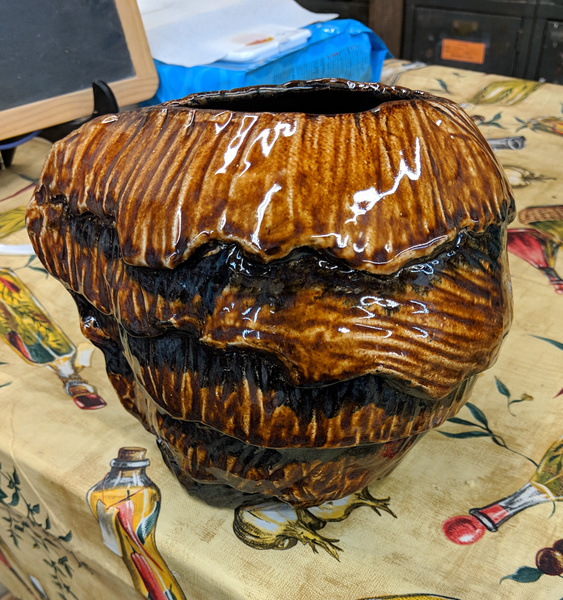
Then I did the same, but with one vertical strip.
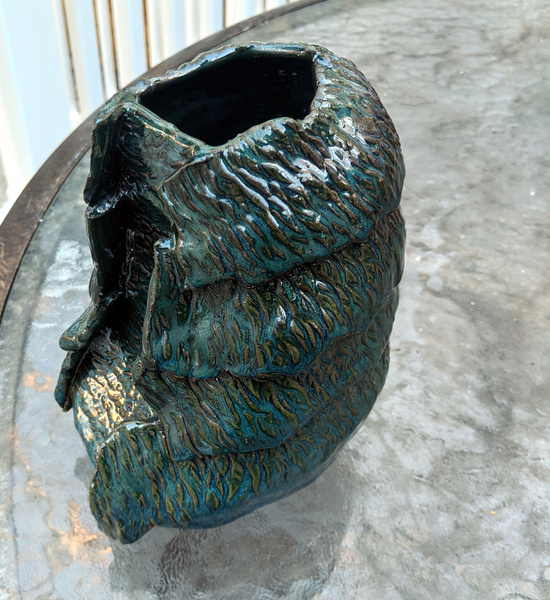
Then I added a head and some arms, to make a finial for one of my fenceposts. Now I just have to make like twelve more finials.

My next idea was to stack without overlap. This is considerably more difficult, because the seams have to be neater. First, I made these two vases that love each other very much. John Seroff did the carving.
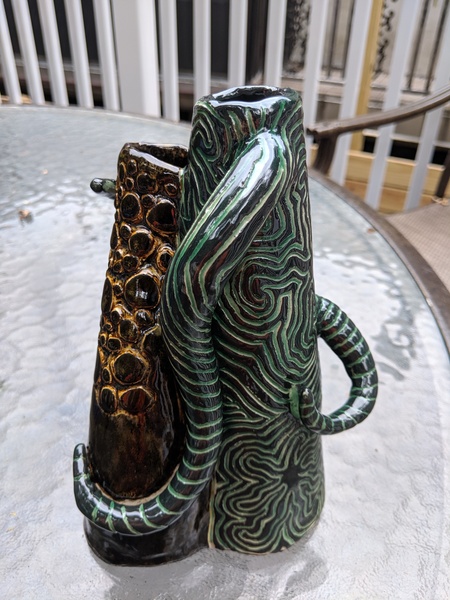
Then I made a taller vase with the same general concept. It barely fit in my kiln.
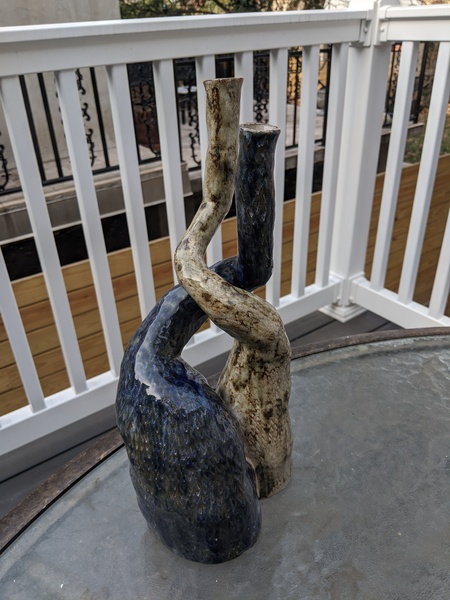
I also made a lidded jar. I actually made two, but the first one was too squat and the glaze didn’t come out the way I wanted it, so I rebuilt it. This one is about 16 inches tall. And of course now that I’m looking at the photo, I see a crack, probably where I inserted the dart to bulge that section. I may have to make a third one. With a less shiny black glaze.
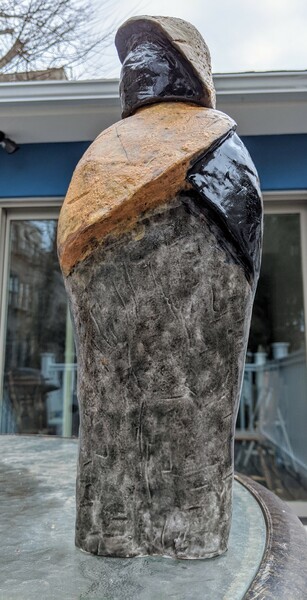
The end, for now, of that line of development is this nine-necked vase. It was in the last kiln of 2019, or, perhaps, the first kiln of 2020, mid-firing as the clock struck midnight. It will be shown at Back to the Table, an exhibit of tableware at the Plaxall Gallery in Long Island City.
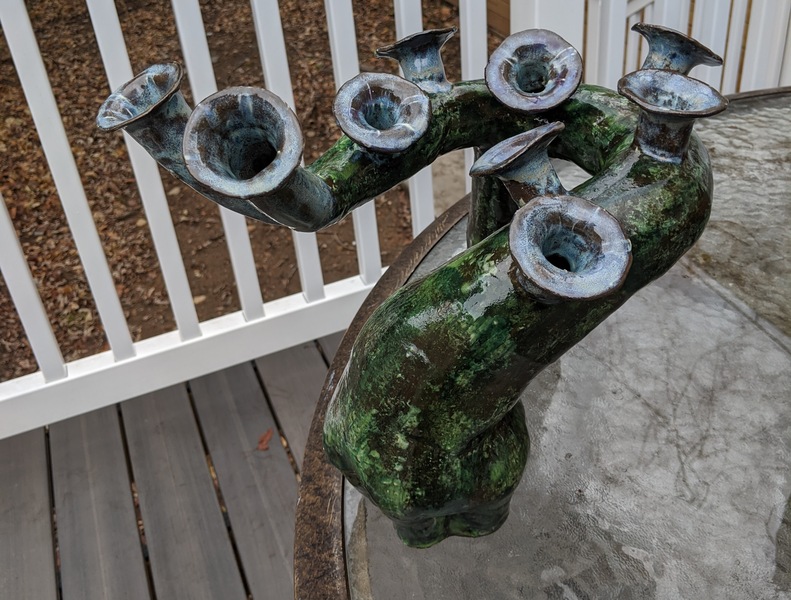
I had a really hard time visualizing how the base of this was going to work, and in the end, I had to add that extra foot. I think part of the problem is that building up at an angle tends to cause sagging, so I started out straighter than I had planned. I’m pretty happy with the glaze, especially the mossy green. But I think that this is about the last piece in this line that I will make for a while.
The second thread started with a funerary urn that I made. I wanted something monolithic and stark, and it needed to be fairly large (about one cubic inch per pre-cremation pound of body-weight). So I cut some tar paper forms, and used them to hold up slabs. The result was not amazing, but it definitely looks sufficiently bleak.
John had been watching me grow as a potter, and asked me if I wanted to collaborate. I built a teapot using tar paper templates, and one of my first animal heads. I was going for a fox, but I was not yet strong enough to get there. So I declared that the result was a coyote. The body has pentagonal symmetry. This is a good choice for me, because my work is always a little sloppy. A sloppy square is obviously sloppy. A sloppy hexagon has non-parallel opposing sides. But a sloppy pentagon is basically fine. John’s photo:
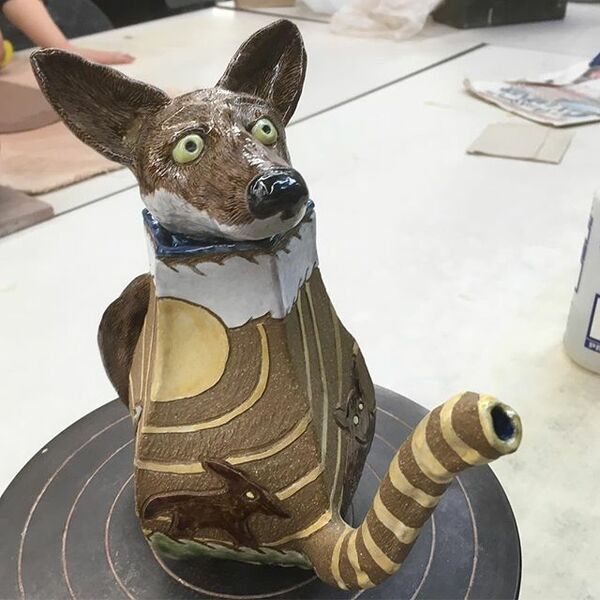
Then I got to thinking about what else I could make with this technique. I realized that pottery rarely has what origami artists call “valley folds.” You can get mountain folds by paddling a thrown piece, or by joining slabs. But valley folds require a bit more thought, because they are hard to press together to get a good joint. So here is my first piece with valley folds. It’s foreshortened in this photo and since I gave it away I can’t reshoot – it’s actually quite a bit slimmer than the photo implies:
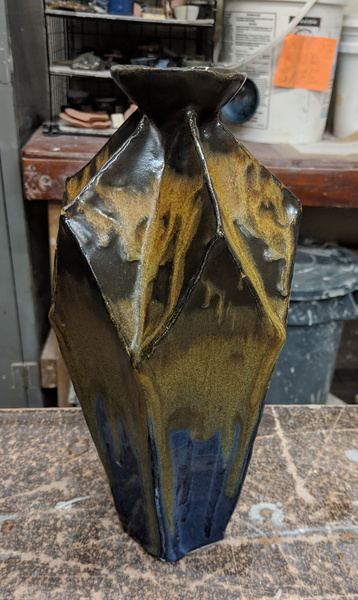
John next suggested that we do a series, and the first complete set that came to mind was the platonic solids. So I built some platonic solid teapots, and John decorated them. His process is slow and he likes to work with a wide variety of people, so I think I ended up making the pieces a bit faster than they could get decorated. So only two and a half of the five are done (John’s photos; the last one needs to be glazed):
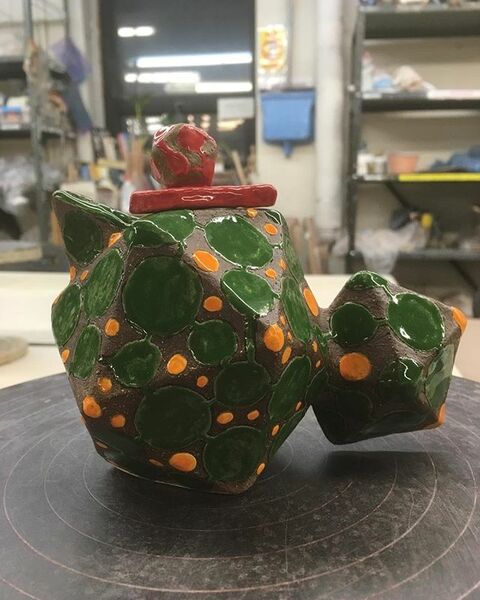
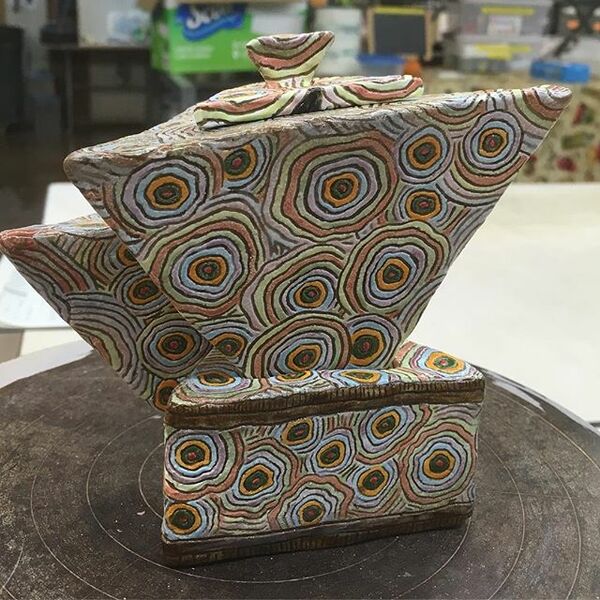
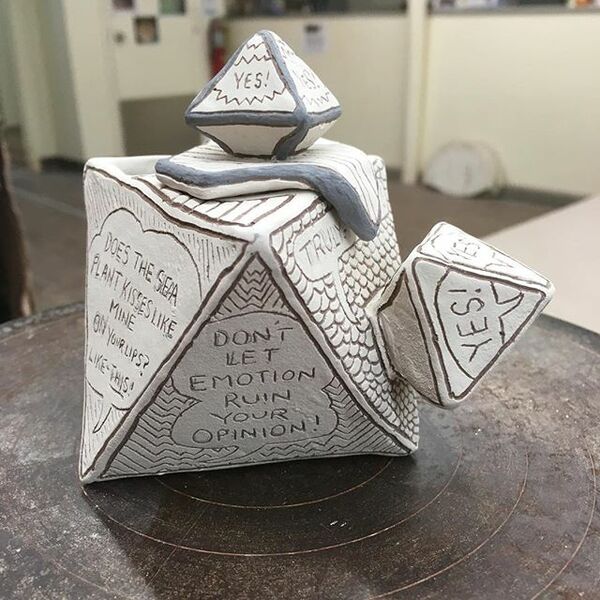
The logical conclusion of this was to go into Blender and design a stupidly complex 36-piece vase, and then have John decorate it. So that is what I did. John’s photo:
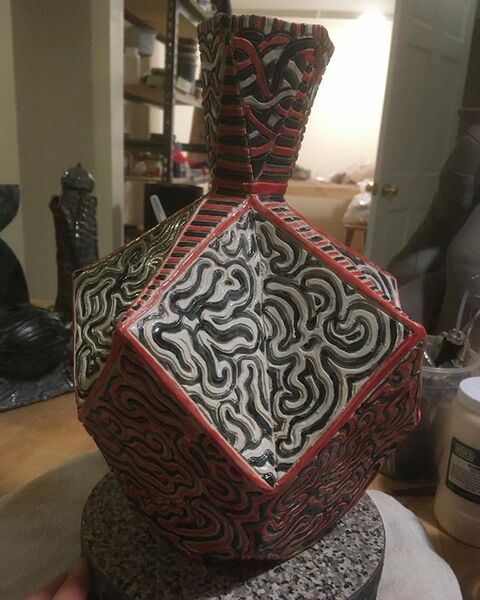
It soon became clear that the tar paper is really only necessary for the dead-flat surfaces. By instead bellying out the slab as one would for a pinch pot, I was able to assemble large vertical surfaces. One of the first of these was a nudibranch-inspired vase. This one doesn’t really have true valley folds, as the “wings” are accessible from both sides, but it does use vertically-joined slabs.
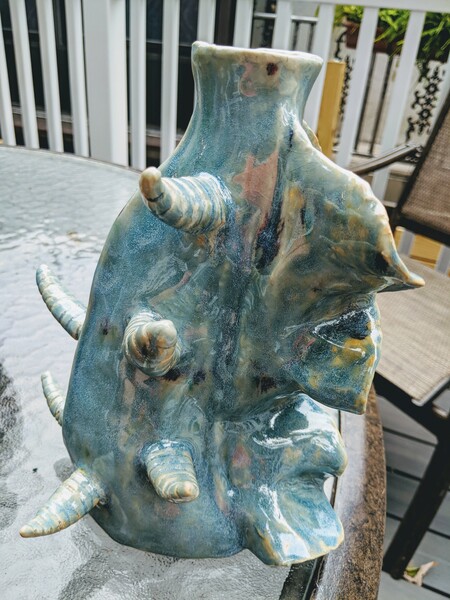
Finally, we reach the point where the two threads converge: a piece with multiple necks, bulged vertical slab sides, and valley folds: Cathedral Vase I. Also, I now have enough work that I need to think of names. I am very happy with the glaze on this one even though the teal-and-orange combination is a bit of a cliche.

I say Cathedral Vase I, as John is working on the surface of II now. Hopefully, I will manage to file another update before 2021. No promises.